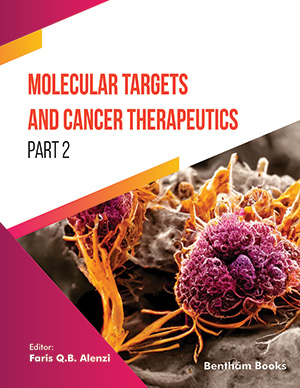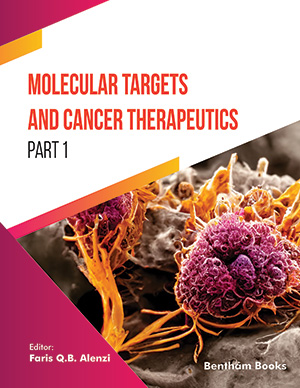Abstract
Background: Exposure to physical contamination during chemotherapy, including non-ionizing electromagnetic fields, raises concerns about the widespread sources of exposure to this type of radiation. Glioblastoma multiforme (GBM) is an aggressive central nervous system tumor that is hard to treat due to resistance to drugs such as temozolomide (TMZ).
Objective: Electromagnetic fields (EMF) and haloperidol (HLP) may have anticancer effects. In this study, we investigated the effects of TMZ, HLP, and EMF on GBM cell lines and analyzed the association between non-ionizing radiation and the risk of change in drug performance.
Methods: Cell viability and reactive oxygen species (ROS) generation were measured by MTT and NBT assay, respectively. Then, the expression levels of breast cancer-resistant protein (BCRP), Bax, Bcl2, Nestin, vascular endothelial growth factor (VEGF) genes, and P53, Bax, and Bcl2 Proteins were evaluated by real-time PCR and western blot.
Results: Co-treatment of GBM cells by HLP and TMZ enhanced apoptosis in T-98G and A172 cells by increasing the expression of P53 and Bax and decreasing Bcl-2. Interestingly, exposure of GBM cells to EMF decreased apoptosis in the TMZ+HLP group.
Conclusion: In conclusion, EMF reduced the synergistic effect of TMZ and HLP. This hypothesis that patients who are treated for brain tumors and suffer from depression should not be exposed to EMF is proposed in the present study. There appears to be an urgent need to reconsider exposure limits for low-frequency magnetic fields, based on experimental and epidemiological research, the relationship between exposure to non-ionizing radiation and adverse human health effects.
Keywords: Low-frequency radiation, nestin, VEGF, glioma, apoptosis, BCRP.
[http://dx.doi.org/10.2174/1874471016666230110144021] [PMID: 36627786]
[http://dx.doi.org/10.3389/fimmu.2021.709986] [PMID: 34512630]
[http://dx.doi.org/10.1097/00019052-200112000-00002] [PMID: 11723374]
[http://dx.doi.org/10.1126/science.1164382] [PMID: 18772396]
[http://dx.doi.org/10.1016/j.ccr.2009.12.020] [PMID: 20129251]
[http://dx.doi.org/10.1124/pr.117.014944] [PMID: 29669750]
[http://dx.doi.org/10.1016/j.jconrel.2016.09.034] [PMID: 27693428]
[http://dx.doi.org/10.2147/CMAR.S310346] [PMID: 34267555]
[http://dx.doi.org/10.1016/j.bbrc.2020.10.058] [PMID: 33109342]
[http://dx.doi.org/10.1002/jbt.22973] [PMID: 34967073]
[http://dx.doi.org/10.1016/j.genhosppsych.2020.08.008] [PMID: 32979582]
[http://dx.doi.org/10.1007/s12010-009-8689-6] [PMID: 19582595]
[http://dx.doi.org/10.1371/journal.pone.0247122] [PMID: 33606790]
[http://dx.doi.org/10.1038/sj.tpj.6500373] [PMID: 16462815]
[http://dx.doi.org/10.3390/biomedicines8120595] [PMID: 33322363]
[http://dx.doi.org/10.1007/s12010-016-2289-z] [PMID: 27761795]
[http://dx.doi.org/10.1016/j.bbrc.2018.06.066] [PMID: 29909008]
[http://dx.doi.org/10.1111/cpr.13154] [PMID: 34741480]
[http://dx.doi.org/10.1016/S1383-5718(02)00109-2] [PMID: 12160887]
[http://dx.doi.org/10.1007/s12035-015-9354-4] [PMID: 26223801]
[PMID: 23633341]
[http://dx.doi.org/10.1080/15368378.2018.1477052] [PMID: 29846098]
[http://dx.doi.org/10.1016/j.bbrc.2018.09.010] [PMID: 30219226]
[http://dx.doi.org/10.1016/j.biopha.2017.05.050] [PMID: 28551545]
[http://dx.doi.org/10.1007/s10103-015-1846-y] [PMID: 26714979]
[http://dx.doi.org/10.1016/j.bbrc.2019.04.059] [PMID: 31029424]
[http://dx.doi.org/10.1089/cbr.2020.3851] [PMID: 32644826]
[http://dx.doi.org/10.1039/D1BM01506K] [PMID: 34873606]
[PMID: 36503396]
[http://dx.doi.org/10.1038/sj.cdd.4401359] [PMID: 14713959]
[http://dx.doi.org/10.3892/ol.2018.7917] [PMID: 29552127]
[http://dx.doi.org/10.1016/j.wneu.2019.04.180] [PMID: 31048057]
[http://dx.doi.org/10.1016/j.ejphar.2019.05.031] [PMID: 31108054]
[http://dx.doi.org/10.1016/j.mehy.2012.03.026] [PMID: 22543071]
[http://dx.doi.org/10.1111/j.1476-5381.2011.01426.x] [PMID: 21486284]
[http://dx.doi.org/10.14814/phy2.15189] [PMID: 35510320]
[http://dx.doi.org/10.1016/j.bbrc.2020.02.102] [PMID: 32107004]
[http://dx.doi.org/10.1038/s41598-017-14983-9] [PMID: 29109418]
[http://dx.doi.org/10.1080/15368370600719067] [PMID: 16771300]
[http://dx.doi.org/10.1053/j.gastro.2016.08.040] [PMID: 27578530]
[http://dx.doi.org/10.1016/j.cellsig.2008.10.005] [PMID: 18951975]
[http://dx.doi.org/10.3390/ijms23042322] [PMID: 35216437]
[http://dx.doi.org/10.1371/journal.pone.0104973] [PMID: 25127118]
[http://dx.doi.org/10.1038/onc.2017.52] [PMID: 28368421]
[PMID: 19893078]
[http://dx.doi.org/10.1002/bem.20011] [PMID: 15300728]
[http://dx.doi.org/10.1080/15368378.2021.1958340] [PMID: 34396886]
[http://dx.doi.org/10.18632/aging.102836] [PMID: 32074079]
[http://dx.doi.org/10.1080/15368378.2016.1251452] [PMID: 27874284]
[http://dx.doi.org/10.1007/s12035-022-02915-2] [PMID: 35696013]
[http://dx.doi.org/10.3390/polym13111883] [PMID: 34204049]
[http://dx.doi.org/10.1124/jpet.107.131987] [PMID: 18178904]
[http://dx.doi.org/10.1111/j.1742-7843.2008.00298.x] [PMID: 18834354]
[http://dx.doi.org/10.1007/s10616-015-9900-y] [PMID: 26370097]
[http://dx.doi.org/10.1016/j.bbrc.2013.03.021] [PMID: 23524267]
[http://dx.doi.org/10.1080/15368378.2019.1625784] [PMID: 31179753]
[http://dx.doi.org/10.1002/btpr.3284]


























